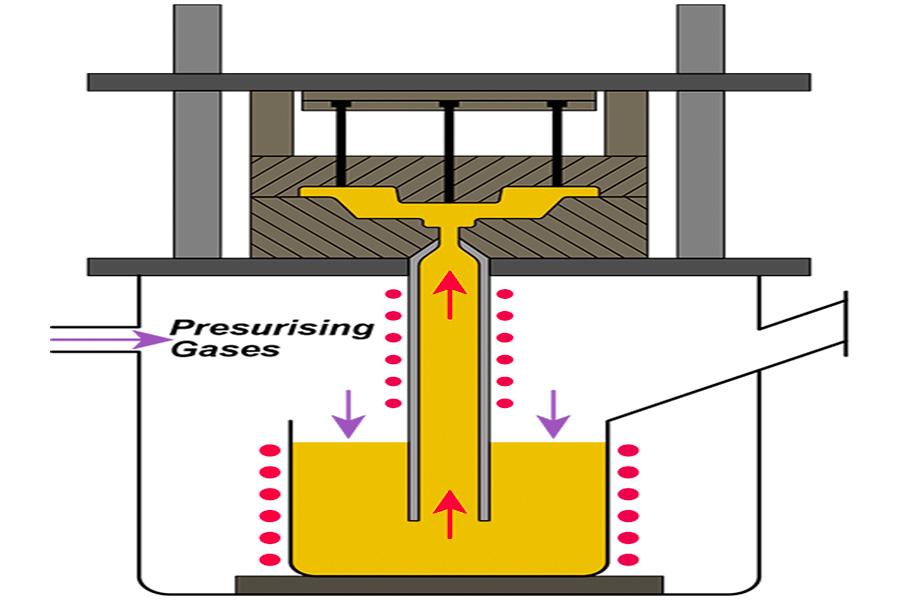Low pressure casting is a casting processin which molten metal is injected into a reusable mold at low pressure. This casting technology is high quality, precise and efficient, making it ideal for parts requiring complex shapes and high surface finishes.
LS As an international high-end OEM/ODM manufacturer, we have nearly 20 years of development experience. We have served and are still serving a variety of customers from various industries, including but not limited to automotive, automation, medical, aerospace, robotics wait. Our core manufacturing services include CNC machining, sheet metal fabrication and stamping. We have also expanded our capabilities into mold making, injection molding, 3D printing and plastic printing as well as complete turnkey projects,our company is a one stop shop for all your casting needs.
What is Low Pressure Casting?
Low pressure castingis a metal forming process that uses gas pressure as a driving force to push molten metal to fill the mold cavity smoothly and evenly, and complete the solidification process under controlled environmental conditions. This technology is usually carried out in a sealed casting system. By precisely regulating the size and time of gas pressure, it can achieve fine control of the filling speed and solidification process of molten metal.
Low pressure casting can not only effectively avoid defects such as turbulence, oxidation and pores caused by molten metal during mold filling, but also improve the density, mechanical properties and surface quality of castings. Therefore,it is widely used in aerospace, automobile manufacturing, power equipment and precision instruments. It has a wide range of applications in high-end manufacturing fields.
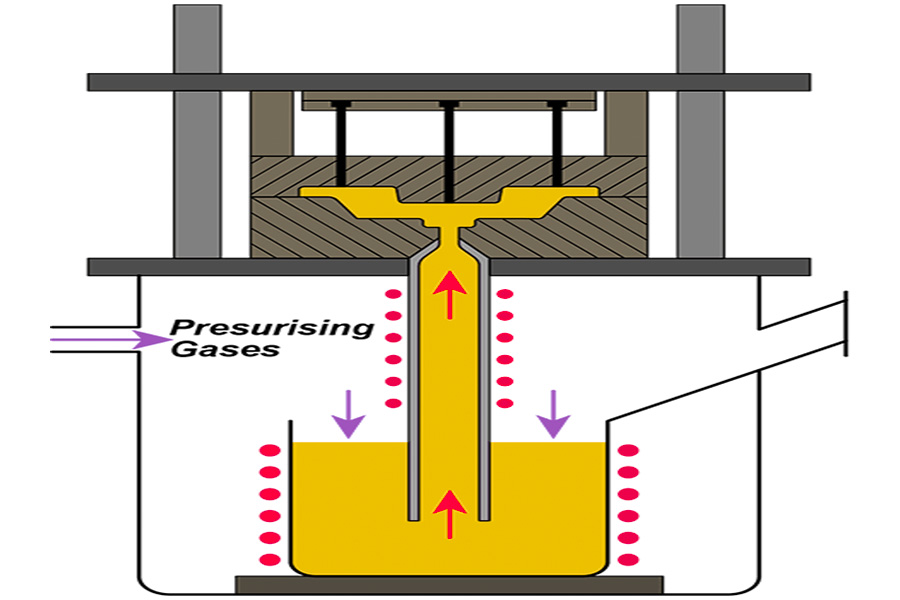
How Does Low Pressure Casting Differ from High Pressure Casting?
Low pressure casting and high pressure casting are two different metal casting processes, and they differ significantly in many aspects. The following table compares the main differences between the two casting processes:
| Project | Low pressure casting | High pressure casting |
|---|---|---|
| Driving force | Gas pressure (barometric pressure) | Hydraulic cylinder drive (hydraulic) |
| Pressure range | Generally, it is low, and the air pressure is 0~2Kg/cm² | High, use oil pressure |
| Filling speed | Slower, which helps the gas to expel out | Faster, improve production efficiency |
| Casting quality | High quality, high precision, dense tissue | The surface quality is good, and there may be pores inside |
| Casting type | Complex shapes, high precision requirements | Large-scale, mass-produced for thin-walled castings |
| Fields of application | Auto parts, aerospace parts, etc | Home appliances, hardware products, etc |
| Equipment costs | Relatively low | The higher the mold manufacturing cycle is longer |
| Productivity | In general, the coagulation rate is slower | High, suitable for mass production |
| Mould material | Molding sand, resin sand, metal, ceramic, etc | It depends on your specific needs |
| Advantage | The structure is dense, the mechanical properties are good, and it is easy to be mechanized and automated | High production efficiency, suitable for thin-walled castings |
| Disadvantages | Lower productivity and long casting cycles | There may be pores inside, and the casting is not dense |
What Metals Are Commonly Used in Low Pressure Casting?
Low pressure casting technology is often referred to asaluminum low pressure castingbecause of its broad applicability to aluminum alloys, but the process is equally applicable to a variety of other materials. The following are severalmaterials commonly used in low pressure casting:
1.Aluminum
It flows smoothly during the process to fill all corners of the mold. In addition,aluminum is particularly suitable for manufacturingthin-walled castings with wall thicknesses greater than 5mm. These properties, combined with aluminum's light weight and high strength, determine its widespread use in many industrial sectors.
2.Copper
Copper alloys are also compatible with low pressure casting processes, thanks to their high tensile strength. During the casting process, copper alloys solidify and cool quickly, forming a fine-grained structure that avoids cracking in the casting. Other inherent properties of copper alloys such as durability and thermal conductivity also make it widely used in different industries. However, it should be noted that copper has a higher melting point, which will lead to increased process energy consumption and higher costs.
3. Magnesium
Magnesium is an ideal material for low pressure castingdue to its high castability and good flowability. It fills the mold seamlessly, ensuring that the casting does not appear porous. Magnesium's high strength-to-weight ratio and corrosion resistance are also reasons for its popularity.
4.Zinc
Zinc also performs well in low pressure casting. It has good castability, low melting point and high solidification rate, which make it a top-notch low pressure casting material. Compared with high pressure casting, low pressure zinc casting can increase the cycle rate and reduce costs. Additionally, zinc is less abrasive to molds, helping to extend tool life. Zinc's high tensile strength and corrosion resistance also provide the possibility for its application in different fields.
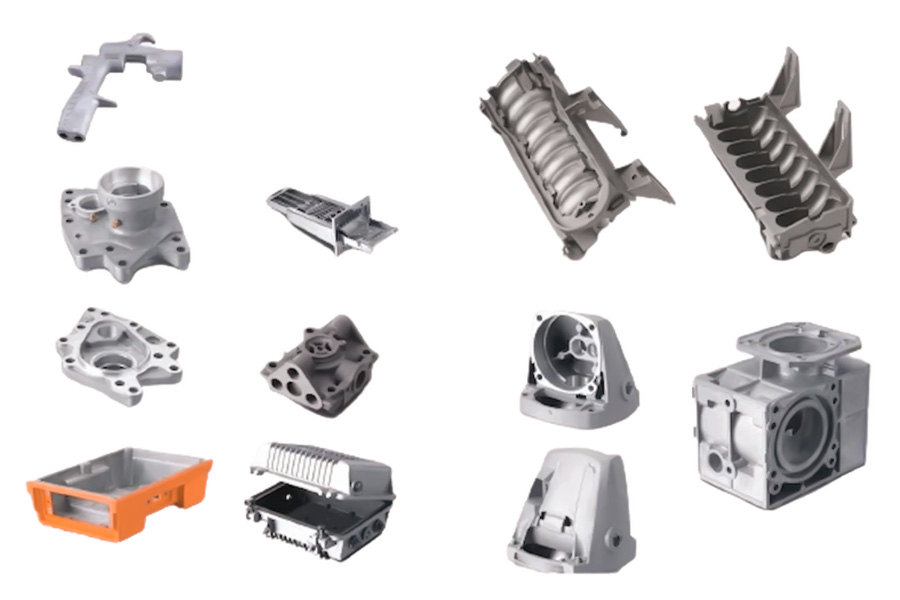
What Are the Steps in the Low Pressure Casting Process?
The basicprinciple of low pressure castingis to use gas pressure to push molten metal so that it can fill the mold smoothly and solidify under pressure. During the casting process, the molten metal in the crucible is affected by gas pressure and flows into the casting cavity from bottom to top through the liquid riser. Thelow pressure casting processmainly includes the following steps:
- Mold Preparation:The process begins with the preparation of a mold that defines the final shape of the metal component. The die is preheated to a temperature that is slightly below the melting point of the metal being cast.
- Molten Metal Injection:Molten metal, often aluminum or zinc, is poured into a holding furnace that is located below the die. The molten metal is injected into the mold at relatively low pressures. That is, pressure is applied to the molten metal to force it up into a riser tube and the die cavity.
- Solidification:The pressure is held until the metal solidifies completely. The metal takes the shape of the cavity.
- Ejecting:After the metal gets solidified, the mold is opened. The newly cast product is released.
- Trimming and Finishing:Excess material (flash) is removed. Additional finishing processes may be applied to meet quality standards. Excess material and any scrapped parts are often recycled for future use.
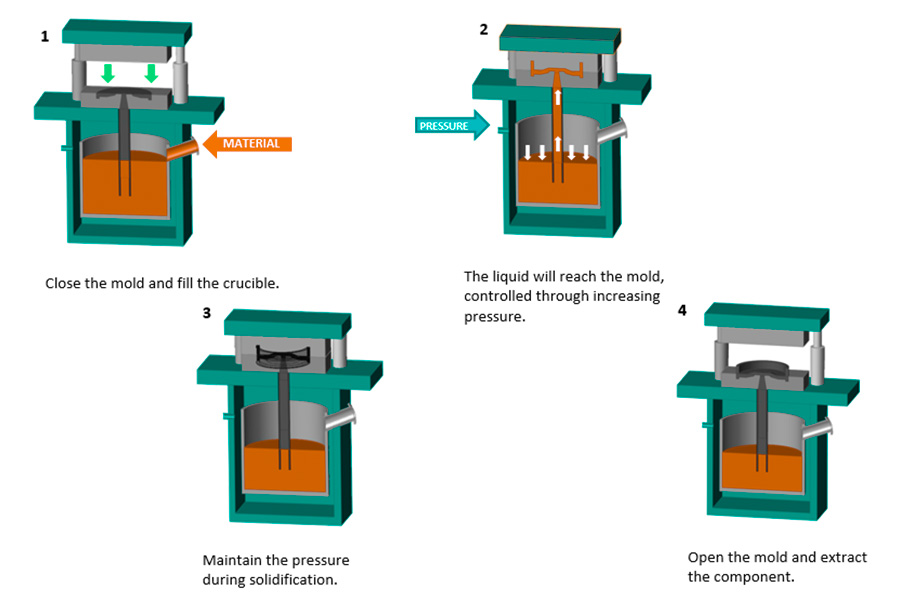
What Are the Key Advantages of Low Pressure Casting?
Low pressure casting has many advantages, making it a suitable die casting method for multiple industries. Here are some of the advantages of this process.
High Accuracy
Parts manufactured using low pressure casting are accurate and precise. This is because there is a slow filling of the die at a constant temperature and pressure. This high dimensional accuracy associated with the process is important in the manufacturing of small castings that need assembling after manufacturing.
It Forms Highly Pure Castings
Since the process occurs at low pressure and slowly fills the die, it leads to the formation of very pure casting as there is no slag formation. Slag formation on the surface of the liquid metal is common in other die casting processes, especiallyhigh pressure casting. However, since the casting uses an upward movement the slags do not leave the holding furnace as one pumps the metal.
It has a Good Formability
Low pressure casting has good formabilityas it produces metal parts without cracking or deforming. As a result, it is suitable for manufacturing parts with complex shapes and designs.
Crystallization
Appropriate heat distribution and the supply of pressure during solidification lead to crystallization of the final part. Crystallization produces stronger pieces with finer grain size. As a result, thelow pressure casting is suitable for applicationswhere impact and stress resistance is essential.
Environmentally Friendly
Low pressure casting is an environmentally friendly process. When compared to some other casting processes, it is more energy efficient. Furthermore, it generates minimal waste which can be recycled. By being environmentally friendly, low pressure die casting saves operating costs.
What are the disadvantages of low pressure casting?
Although low pressure casting technology is regarded as the preferred solution to achieve precise manufacturing goals, it also comes with some limitations.
1.Long production cycle and high cost
The relatively slow production cycle due to the lower pressures involved inlow pressure casting limitsthe number of parts that can be manufactured per unit of time, driving up the cost of a single part.
2.Metal parts are susceptible to corrosion
Inlow pressure casting operations, the metal components of the equipment are susceptible to corrosion due to direct contact with molten metal, and aluminum molds in particular are more susceptible to damage. Not only does this increase maintenance costs, especially in large production lines, but the potential infiltration of metallic components may also weaken the performance of the liquid metal.
3.Manufacturing of thin-walled parts is limited
The minimum casting wall thickness that low pressure casting technology can achieve is about 3 mm. This limitation means that it has no advantage over high pressure casting in manufacturing thin-walled parts.
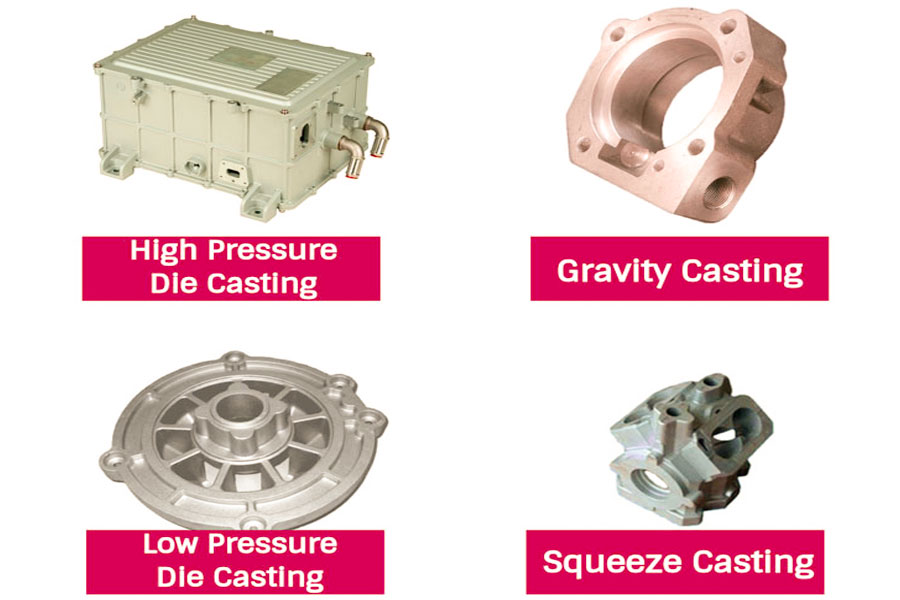
Reasons to choose LS as a casting manufacturer
No matter whattype of casting process servicesyou need, we're here to help. With our expertise and industry-leading technology, we can provide you with the highest quality castings.
- Multi-material processing:We have the ability to process a variety of materials, no matter which material you need to process, we can provide professional solutions.
- Customized services:Providecustomized solutions based on customers’ design requirementsand specifications to ensure castings meet their unique needs.
- Competitive prices:We provide competitive prices and cost-effective solutions to ensure that customers gain the greatest advantage in cost control.
- Fast delivery:We have efficient production processes and flexible production plans, allowing us to deliver customer orders in a timely manner and meet urgent project needs.
LS ensures the quality of your castings through ISO 9001:2015, ISO 9001:14001 and IATF16949. At LS we can manufacture castings to suit your business needs, whether cast iron, steel or nickel alloys. Click here to contact us today.
FAQs
1. What is low pressure casting?
Low pressure casting is a metal casting processthat uses gas pressure to push the molten metal inside the crucible and smoothly flow into the mold cavity from bottom to top through a riser tube until the casting is completely solidified. The process requires precise control of the gas pressure and the filling rate of the molten metal to ensure the quality and performance of the casting.
2. What is the working principle of low pressure casting?
In the low pressure casting process, dry compressed air or inert gas is introduced into the sealed crucible, which smoothly fills the mold from bottom to top along the riser tube by acting on the pressure on the molten metal surface. The filling pressure is generally 20~60kPa, and the rising height of the molten metal is directly proportional to the pressure of the gas in the crucible and inversely proportional to the density of the molten metal. The casting crystallizes and solidifies under pressure to obtain a casting with a dense structure.
3. What are the main advantages of low pressure casting?
The mainadvantages of low pressure castinginclude:The casting quality is good: The molten metal is filled smoothly under pressure, which reduces the involvement of oxidation slag and gas, and improves the purity and tissue compactness of the casting.High utilization rate of metalThere is no need for a riser, and the unsolidified metal in the riser tube can be reflowed back into the crucible for reuse, which improves the yield of molten metal.AdaptableIt is suitable for a variety of alloy materials and casting materials, and can produce large, medium and small castings to meet the needs of small batch or large-scale production.The casting is dimensionally accurate: Castings solidified under pressure have high dimensional accuracy and shape stability.It is easy to automate production: The operation is simple, and the equipment is easy to realize mechanization and automation.
4. What are the limitations of low pressure casting?
Thelimitations of low pressure castingmainly include:The production efficiency is relatively low: Compared to high-pressure casting, low-pressure casting has a slower filling and solidification process, which may lead to a longer production cycle.Equipment investment and maintenance costs are high: Specialized equipment and molds are required, and the purchase and maintenance costs are high.Material Limitations: It is mainly suitable for non-ferrous metal alloys with low melting point, and has poor applicability to metals with high melting point.The technical difficulty is high: Precise control of process parameters is required, which requires a high level of skill and knowledge of the operator.
Summary
Low pressure casting is an efficient, high-quality metal casting process. Its unique advantages make it widely used in many fields, providing important technical support for industrial production. With the continuous development of casting technology, low pressure casting will continue to play an important role in the future, providing more high-quality casting products for various industries.
Disclaimer
The content on this page is for reference only.LSdoes not make any express or implied representation or warranty as to the accuracy, completeness or validity of the information. No performance parameters, geometric tolerances, specific design features, material quality and type or workmanship should be inferred as to what a third party supplier or manufacturer will deliver through the Longsheng Network. It is the responsibility of the buyerseeking a quote for partsto determine the specific requirements for those parts.Pleasecontact usfor moreinformation.
LS Team
LS is an industry-leading companyspecializing in custom manufacturing solutions. With over 20 years of experience serving more than 5,000 clients, we focus on high-precisionCNC machining,sheet metal fabrication,3D printing,injection molding,metal stamping,and other one-stop manufacturing services.
Our factory is equipped with more than 100 advanced 5-axis machining centers and is ISO 9001:2015 certified. We provide fast, efficient, and high-quality manufacturing solutions to customers in over 150 countries worldwide. Whether it’s low-volume production or large-scale customization, we can meet your needs with delivery as fast as 24 hours. ChoosingLS Technologymeans choosing efficiency, quality, and professionalism.
To learn more, please visit our website:www.lsrpf.com


